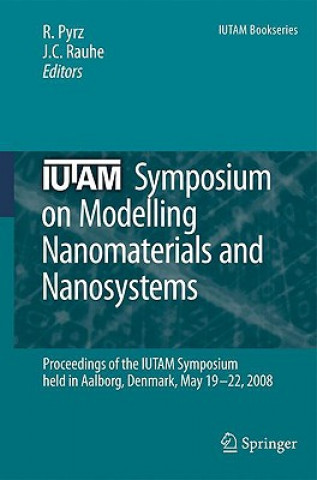
Versand
Kaufberater





Passt nicht? Macht nichts! Bei uns ist die Rückgabe innerhalb von 30 Tagen möglich
 Geschenkgutschein
In einem beliebigen Wert
Geschenkgutschein
In einem beliebigen Wert
Mit einem Geschenkgutschein können Sie nichts falsch machen. Der Beschenkte kann sich im Tausch gegen einen Geschenkgutschein etwas aus unserem Sortiment aussuchen.
IUTAM Symposium on Modelling Nanomaterials and Nanosystems
 Englisch
Englisch
 488 b
488 b
30 Tage für die Rückgabe der Ware
Das könnte Sie auch interessieren


Recent interest in nanotechnology is challenging the community to analyse, develop and design nanometer to micrometer-sized devices for applications in new generations of computer, electronics, photonics and drug delivery systems. To successfully design and fabricate novel nanomaterials and nanosystems, we must necessarily bridge the gap in our understanding of mechanical properties and processes at length scales ranging from 100 nanometers (where atomistic simulations are currently possible) to a micron (where continuum mechanics is experimentally validated). For this purpose the difficulties and complexity originate in the substantial differences in philosophy and viewpoints between conventional continuum mechanics and quantum theories. The challenge lies in how to establish the relationship between a continuum mechanical system and its atomistic counterpart in order to define continuum variables that are calculable within an atomic system.Recent interest in nanotechnology is challenging the community to analyse, develop and design nanometer to micrometer-sized devices for applications in new generations of computer, electronics, photonics and drug delivery systems. To successfully design and fabricate novel nanomaterials and nanosystems, we must necessarily bridge the gap in our understanding of mechanical properties and processes at length scales ranging from 100 nanometers (where atomistic simulations are currently possible) to a micron (where continuum mechanics is experimentally validated). For this purpose the difficulties and complexity originate in the substantial differences in philosophy and viewpoints between conventional continuum mechanics and quantum theories. The challenge lies in how to establish the relationship between a continuum mechanical system and its atomistic counterpart in order to define continuum variables that are calculable within an atomic system.§A major focus of the symposium is on modelling schemes, which allow for concurrent atomistic and continuum description of deformation and fracture of advanced materials. Contributions cover development and implementation of models and theories, which account for the full transition from an atomistic description to a continuum description, and vice versa, in a seamless manner. Particular attention is devoted to two approaches, namely, simultaneous (synchronous, direct) integration methods, where interacting simulation and modelling levels are simultaneously considered, and sequential (non-synchronous, indirect) integration methods, which consist of an appropriate transfer of parameters among calculations that are used sequentially. The distinction is made between methods which are discrete both at the atomic and continuum level and methods which embed statistics of the atomic level in the continuum level.
Informationen zum Buch
 Englisch
Englisch
Kategorie


 Kontakt
Kontakt Wie einkaufen
Wie einkaufen































